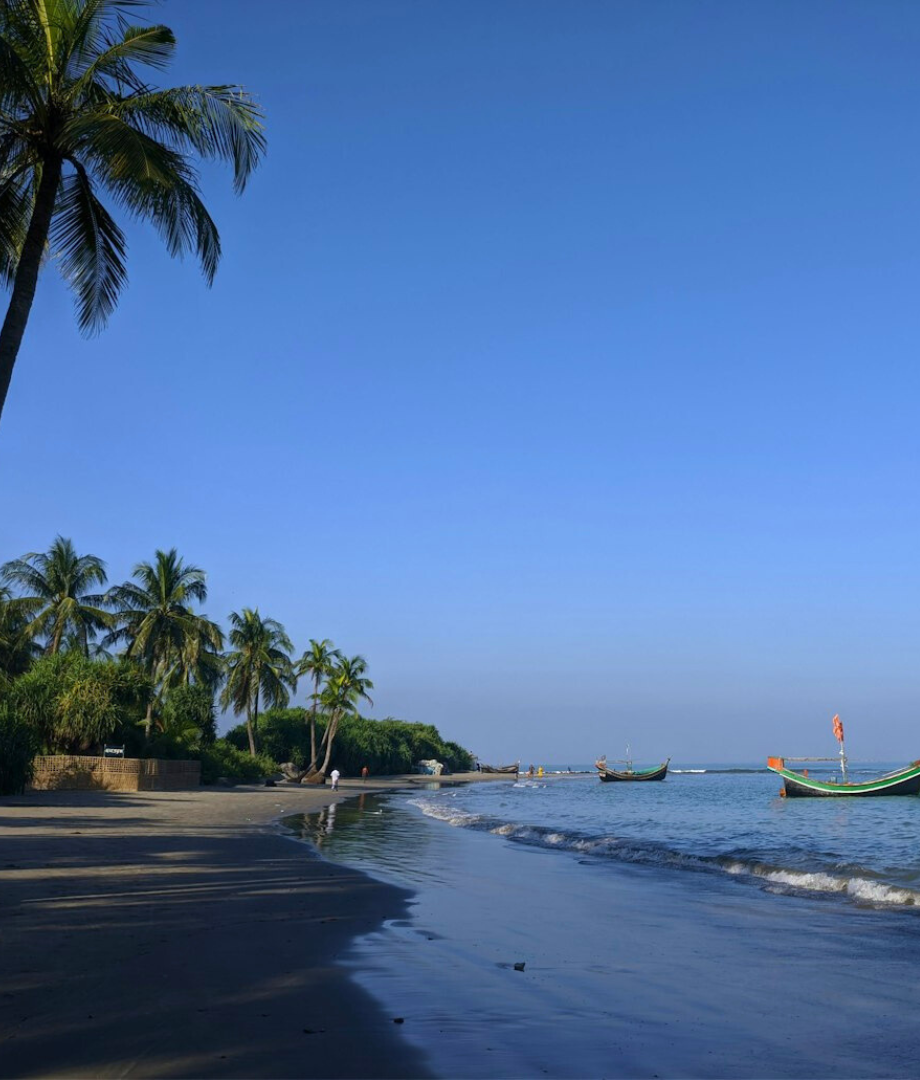Explore Maldives' Tourist Places
With over 1,000 islands, picking the top attractions in Maldives can feel impossible. That's why ShareTrip has done the work for you. These places in Maldives are where magic actually happens. We’re talking about manta ray ballet at breakfast. The beaches are so beautiful that you’ll question reality. There are local islands where "tourist" still feels like a strange word. No matter what takes you to the Maldives (honeymoon, adventure, or pure escapism), this list is your backstage pass to the real show.
Malé
A vibrant capital blending culture, history, and modern attractions.
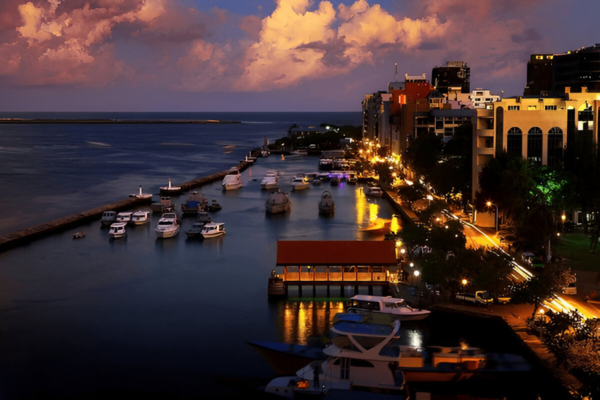
Malé is the capital of the Maldives. Malé is located in the North Malé Atoll (Kaafu Atoll) in the central-western part of the archipelago. Since you'll land in this city first, it would be crazy not to explore it properly. It is a densely populated yet fascinating city. Malé blends rich culture, history, and urban energy with easy access to stunning beaches and turquoise lagoons. Key attractions include the 17th-century Old Friday Mosque (Hukuru Miskiy), a UNESCO-listed coral stone marvel, and the Maldives Islamic Centre, known for its golden dome. The National Museum houses artifacts dating back to the 12th century, while the bustling Malé Fish Market offers a glimpse into local life. Despite its compact size (just 8.3 sq km), Malé serves as the main gateway to the Maldives, with ferries and speedboats connecting to nearby resorts and islands like Hulhumalé and Villingili. Whether you're exploring historic mosques, shopping at local markets, or relaxing at Artificial Beach, Malé provides an essential cultural contrast to the Maldives' luxury resorts—making it a must-see for history buffs, culture lovers, and first-time visitors looking to experience the authentic heartbeat of the islands.
Hulhumalé
Stunning beaches and modern comforts for a perfect getaway.

Hulhumalé, a stunning man-made island, is located just 8 km northeast of Malé in the North Malé Atoll. It is very accessible since it's near Velana International Airport. Designed as a sustainable urban hub, this 4 km² island combines modern infrastructure with eco-friendly initiatives, offering visitors wide boulevards, golden sandy beaches, and a 2.5 km beachfront promenade perfect for sunset strolls. Hulhumalé stands out for its family-friendly parks like Central Park, watersports (including parasailing and kitesurfing), and the striking Hulhumalé Mosque—an architectural gem. Unlike resort islands, it provides a rare glimpse into local Maldivian life while still offering boutique hotels and cafes. Its strategic location (just a 10-minute drive from the airport) makes it ideal for a short layovers in your Maldives trip. Tourists seeking adventure, culture, or just a break from crowded resorts, should definitely visit Hulhumalé. It delivers a unique blend of convenience, sustainability, and coastal charm—earning its name among the best tourist attractions of Maldives.
Maafushi
A budget-friendly island with crystal-clear waters and lively resorts.
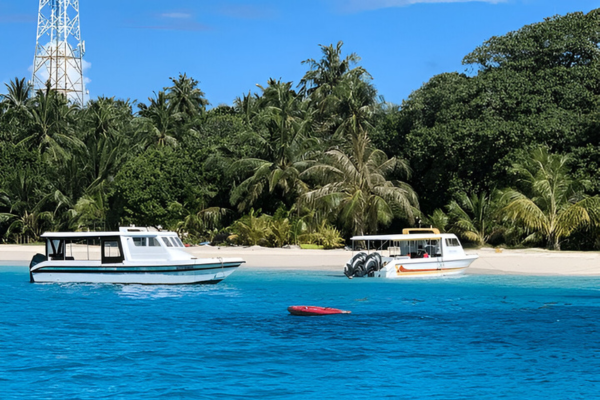
Maafushi is located in the South Malé Atoll (Kaafu Atoll). Just 27 km southeast of the capital, Maafushi revolutionised Maldives' tourism by pioneering affordable guesthouses and public beaches—making it a greact choice budget-conscious travellers. There are many things to do in Maafushi, since this 1.2 km-long island packs incredible value with its crystal-clear lagoon, vibrant Bikini Beach (one of Maldives' few public swimsuit-friendly beaches), world-class snorkelling/diving sites teeming with reef sharks, stingrays, and kaleidoscopic coral gardens just meters offshore. As the first local island to legally welcome tourists in 2010, Maafushi offers an authentic slice of Maldivian life alongside thrilling excursions—from dolphin cruises to private sandbank picnics—all at a fraction of resort prices. Its walkable size (you can circle the island in 30 minutes!) and central location make it the perfect base for exploring the Ari Atoll or catching a speedboat from Malé (45 mins). Maafushi proves you don’t need a luxury resort to experience the Maldives’ magic—just crystal waters, vibrant marine life, and rich local charm.
Thulusdhoo
A surfer’s paradise offering world-class waves and a relaxed vibe.
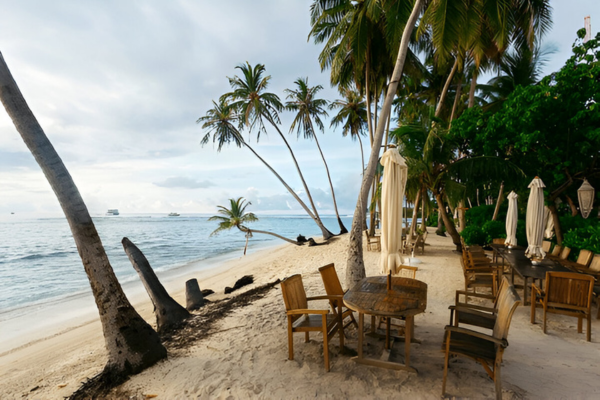
Thulusdhoo, located in the Kaafu Atoll just 28 km northeast of Malé, earns its reputation as the undisputed surfing capital of the Maldives with world-class breaks like Chicken's (for beginners) and Coke's (for experts) - some of the best surf spots in Maldives. This unique island combines adrenaline-pumping water sports with authentic cultural experiences, from watching craftsmen build traditional dhonis (Maldivian boats) to exploring its one-of-a-kind Coca-Cola factory - the only plant in the world producing the beverage from desalinated seawater. Beyond surfing, the island's house reef offers exceptional diving with regular shark encounters, while its compact size (just 1.5 km long) means you're never far from vibrant handicraft markets or beachfront guesthouses. If you want to visit one of the most unique inhabited islands in Maldives, Thulusdhoo easily stands out. Its vibrant community, handicraft markets, and beachfront guesthouses make it a must-visit place in the Maldives.
Dhigurah
Pristine beaches and vibrant marine life, ideal for diving.
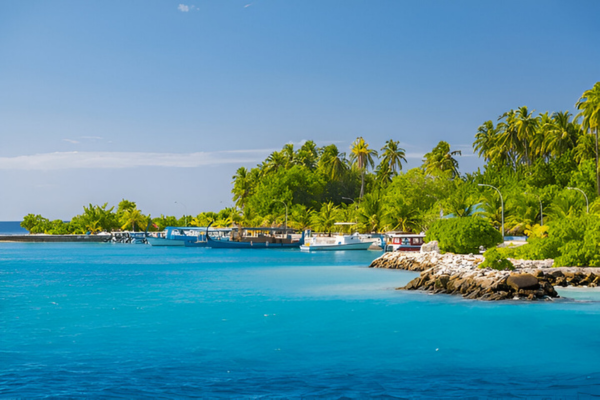
Dhigurah stands out as one of the best places to visit in Maldives for unforgettable marine encounters. It is located in the stunning South Ari Atoll, which is southwest of Malé. It's year-round whale shark population attracts divers and snorkellers from across the globe. This 3.5 km-long island (one of Maldives' longest local islands) boasts pristine, palm-fringed beaches that feel blissfully uncrowded, while its house reef teems with manta rays, sea turtles, and vibrant coral gardens just meters from shore. As a top ecotourism destination in Maldives, Dhigurah offers responsible whale shark excursions (with a 95% sighting rate) alongside authentic cultural experiences like fresh seafood feasts prepared by local fishermen. Dhigurah checks every box for the perfect Maldives getaway: spectacular wildlife viewing, postcard-worthy beaches, and rich cultural encounters - which means you have the best reasons to go here!
Ukulhas
An eco-friendly island with beautiful beaches and local charm.
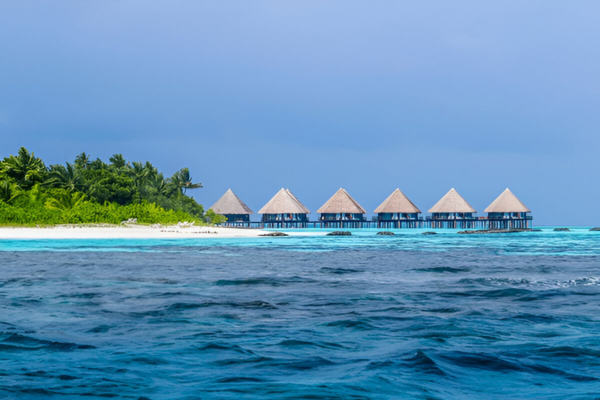
Ukulhas is renowned as the Maldives' first eco-friendly island with a pioneering waste management system. As a pristine island in North Ari Atoll (west-central Maldives), it is perfect for travellers seeking an eco-conscious area. Ukulhas combines sustainability with stunning natural beauty—think powder-white beaches stretching 1.5 km and a vibrant house reef teeming with sea turtles and reef sharks just 50m offshore. This award-winning destination offers guilt-free snorkelling in crystal-clear lagoons, coral restoration programs visitors can join, and authentic cultural experiences like boduberu drumming performances. Unlike crowded resorts, Ukulhas maintains an intimate, local vibe with just 1,000 residents while delivering professional tourism services. For those who want to experience the Maldives' marine wonders responsibly while supporting community-led conservation, Ukulhas is a top choice among the must-visit Maldivian destinations—proving sustainability and luxury can coexist.
Fulhadhoo
Untouched natural beauty and peaceful surroundings await here.
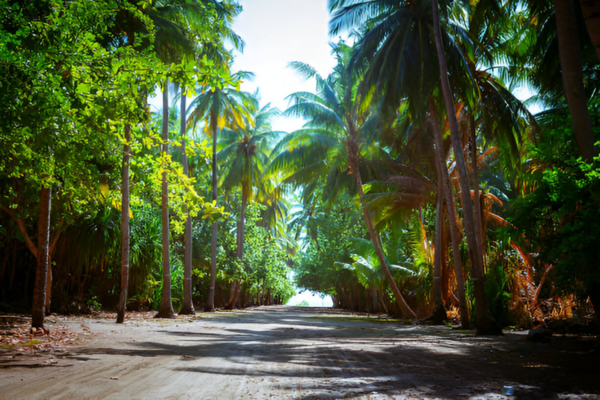
Fulhadhoo ranks among the top hidden gems in Maldives. It is a secluded village in the Baa Atoll (northwest Maldives), with just 200 residents preserving authentic island life. This 1km-long haven offers some of the country's most pristine white-sand beaches, where bioluminescent plankton transforms night swims into magical glowing experiences - a rare phenomenon found in few Maldivian islands. As one of the most naturally preserved local islands in Maldives, Fulhadhoo's traditional fishing village (with its iconic wooden houses and coconut palms) provides complete escape from resort crowds, while its shallow lagoons and house reef offer world-class snorkelling with turtles and rays. The island's sustainable tourism approach - balancing local culture with small-scale guesthouses - makes it perfect for tourists seeking untouched beauty in Maldives, proving exotic still exists beyond the luxury resorts.
Hanifaru Bay
Renowned for incredible manta ray sightings and marine biodiversity.
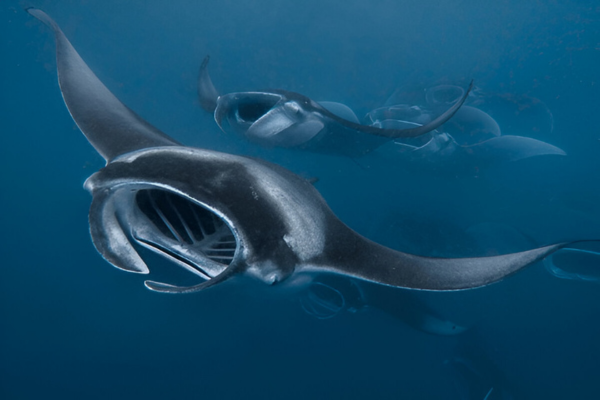
Hanifaru Bay is a UNESCO Biosphere Reserve in northwest Maldives. Situated at the Baa Atoll, it offers one of the planet's most spectacular marine encounters. Between May-November, this protected sanctuary hosts the world's largest gatherings of manta rays (up to 200 at once) and gentle whale sharks feeding on plankton blooms, creating an unparalleled snorkelling experience in crystal-clear waters. As one of only a few places globally where this marine phenomenon occurs, the bay's strictly regulated eco-tourism approach (with limited visitor numbers) ensures both incredible wildlife viewing and conservation success. For nature lovers seeking bucket-list encounters with majestic sea creatures in their natural habitat, Hanifaru Bay stands out among Maldives' top tourist attractions - a shining example of sustainable marine tourism that deserves its spot in any Maldives itinerary.
Fuvahmulah
Unique freshwater lakes and diverse wildlife for adventure seekers.
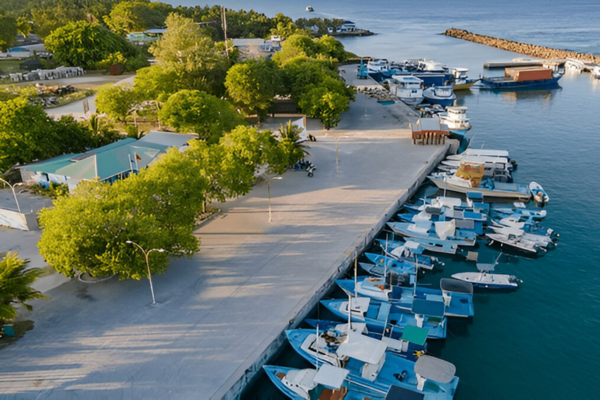
Fuvahmulah is one of the most atrtactive tourist destinations in Maldives. Also known as the "Shark Island," this a one-of-a-kind destination in the southernmost Gnaviyani Atoll offers unparalleled diving experiences. This unique oval-shaped island (6.5 km long) breaks all Maldivian stereotypes - it's the only coral-free atoll where deep-sea species like tiger sharks thrive, with 90% sighting rates at the famous "Tiger Zoo" dive site year-round. Beyond its world-class shark encounters, Fuvahmulah boasts rare natural wonders like two freshwater lakes (Dhadimagi Kilhi and Bandaara Kilhi), lush coconut plantations, and the striking Thundi Beach with its polished black pebbles - a geological marvel unseen elsewhere in Maldives. For divers and adventure seekers craving adrenaline-pumping shark action, Fuvahmulah delivers unforgettable experiences.
Addu City
Rich culture, scenic landscapes, and southernmost charm.

Addu City, the southernmost atoll in the Maldives (located 540km south of Malé), offers a unique blend of history and natural beauty that makes it one of the top travelling spots of Maldives. As the nation's second-largest urban area spanning six interconnected islands via 14km of scenic bridges, Addu combines rich WWII heritage (including abandoned British RAF bunkers on Gan Island) with pristine marine ecosystems. The atoll's untouched coral reefs boast 30% higher biodiversity than northern atolls, attracting divers to spot rare species like the Addu anemonefish found nowhere else. Whether exploring historic sites, cycling across island-hopping bridges, or snorkelling in uncrowded reefs, Addu City delivers a multifaceted Maldivian experience beyond typical resorts.
Rasdhoo
Quiet island with vibrant coral reefs and superb diving spots.
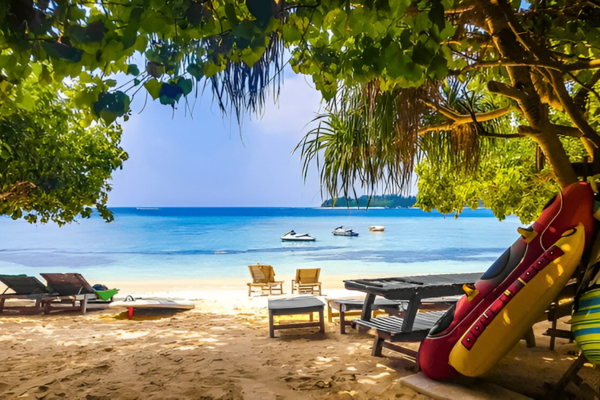
Rasdhoo is the capital of Alif Alif Atoll (North Malé region). This place features thrilling marine encounters and authentic island culture. This diving mecca is famous for Madivaru Corner, where strong currents attract schooling hammerhead sharks (visible 80% of dives November-April), along with eagle rays and barracudas in the 30m-deep channel. Beyond its world-class dive sites, Rasdhoo's seagrass beds host five sea turtle species, while its blindingly white sandbanks create perfect sunset photo ops. As one of few islands maintaining traditional pole-and-line tuna fishing (with daily catches averaging 2-3 tons), Rasdhoo offers travellers both adrenaline-pumping dives and genuine cultural immersion - a rare combination that cements its place among Maldives' must-visit destinations for adventure seekers and culture enthusiasts alike.
Dhiffushi
White sandy beaches and a welcoming local culture.
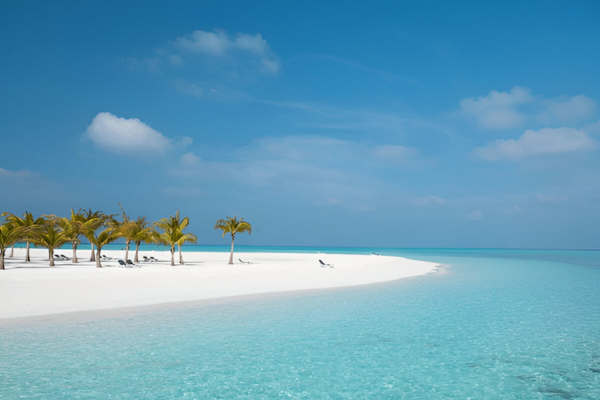
Dhiffushi offers one of the Maldives' most breathtaking sunrise vistas, making it ideal for travellers seeking both natural beauty and cultural authenticity. This easternmost gem in Kaafu Atoll (just 37km northeast of Malé) is a 1.2km-long island. It features powder-soft beaches framing turquoise lagoons so shallow (1-2m depth) they're perfect for first-time snorkellers to spot clownfish and rays in the vibrant house reef. Beyond its picture-perfect shores, Dhiffushi serves up authentic Maldivian experiences - from savoring fresh mas huni (the national tuna-coconut breakfast) at family-run cafés to staying in locally-owned guesthouses that showcase genuine island hospitality. Whether you're paddleboarding at dawn as the sun rises over the Indian Ocean or cycling past pastel-colored houses, Dhiffushi delivers an idyllic yet affordable escape that easily earns its spot among the best tourist attractions of Maldives.
Thinadhoo
Peaceful island retreat with scenic beauty and friendly locals.
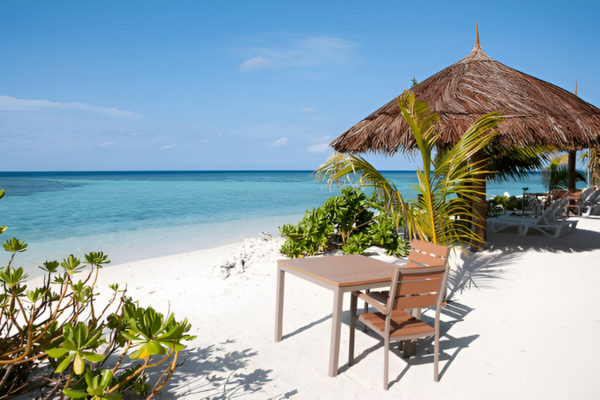
Thinadhoo, another hidden gem in Maldives, is located in Vaavu Atoll (south of Malé). Thinadhoo stands out for its magical bioluminescent beaches and thriving marine life. This unspoiled island offers some of the country's most pristine coral gardens, where snorkellers regularly encounter blacktip reef sharks (visible 90% of the time), sea turtles, and coluorful moray eels in crystal-clear waters. After sunset, the shoreline transforms into a glowing wonderland as bioluminescent plankton illuminates the waves - a rare natural phenomenon found in only a few Maldivian islands. Beyond its natural wonders, Thinadhoo immerses tourists in authentic culture through traditional boduberu drumming performances and local storytelling sessions. Thinadhoo isn’t just another pretty Maldivian island—it’s where adventure meets magic.
Veligandu
Luxurious resorts and breathtaking overwater villas for an unforgettable stay.

Veligandu Island, reigns as one of the Maldives' most romantic destinations. Nestled in North Ari Atoll (just 45 minutes by speedboat from Malé), this island is a top choice for honeymooners and couples visitng Maldives. This place features 82 luxurious overwater bungalows with private sundecks, infinity pools blending into the Indian Ocean horizon, and powder-soft beaches perfect for barefoot strolls. What sets Veligandu apart? Unmatched romantic experiences like sunset dhoni cruises with dolphin sightings (90% success rate), private sandbank picnics, and candlelit dinners under the stars. The island's calm, shallow lagoon offers ideal conditions for paddleboarding and night snorkelling amid glowing plankton - while the award-winning spa provides couples' treatments using local coconut oils. For those seeking ultimate romance in the Maldives, Veligandu's combination of luxury, privacy, and natural beauty easily secures its spot among the best travel destnations in Maldives.
Hithadhoo
A remote, tranquil island for those seeking solitude and beauty.
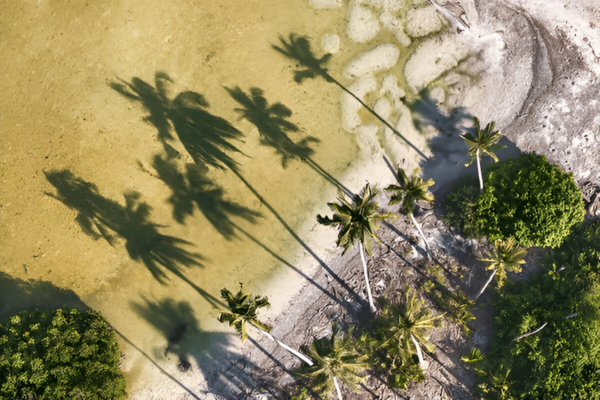
Hithadhoo is the largest island in Addu Atoll, which is the southernmost area of Maldives. It offers an eco-paradise unlike any other destination in the archipelago, becoming a top choice for tourists who are nature lovers. Spanning 8 square kilometers of lush wetlands and mangrove forests - home to 120+ bird species including rare frigatebirds and white terns - this ecological gem provides exceptional birdwatching opportunities. The island's serene Hithadhoo Lagoon, with its glass-calm waters, creates perfect conditions for kayaking and paddleboarding, while 15km of coastal cycling trails reveal breathtaking Indian Ocean vistas. What truly sets Hithadhoo apart is its authentic Maldivian character; here, traditional coral-stone houses and daily fish auctions showcase a way of life unchanged by tourism. For people seeking the Maldives' natural wonders without the crowds, Hithadhoo's unique blend of biodiversity and cultural authenticity makes it one of the best tourist places in Maldives for an off-the-beaten-path adventure.
Gulhi
A lively island with stunning beaches and a vibrant atmosphere.
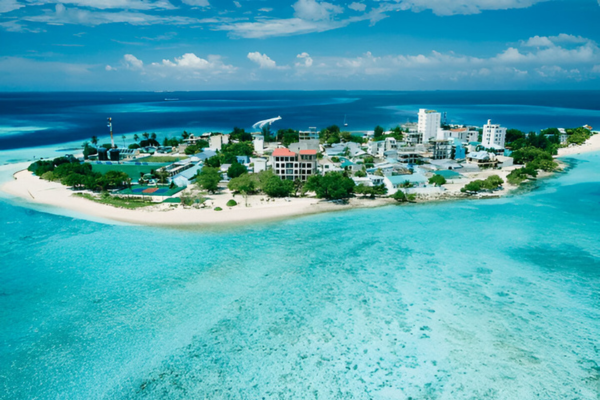
Gulhi, a charming fishing island in South Malé Atoll (just 20km south of the capital), offers one of the most authentic cultural experiences in the Maldives. This 0.3 sq km island is the birthplace of traditional Maldivian dhonis, where skilled craftsmen still build these iconic boats using centuries-old techniques - visitors can watch the entire process from carved keel to painted stern. Beyond its maritime heritage, Gulhi's Bikini Beach provides a secluded sunbathing spot, while its thriving house reef (just 50m offshore) teems with parrotfish and clownfish. Don't miss the chance to join local cooking classes mastering garudhiya (the national fish soup) or hop on a 30-minute speedboat tour to pristine sandbanks. Since Gulhi delivers history, handicrafts and island charm in one compact package, it is a must-visit place in Maldives.
Kelaa
Authentic Maldivian island with rich reefs and calm beaches.
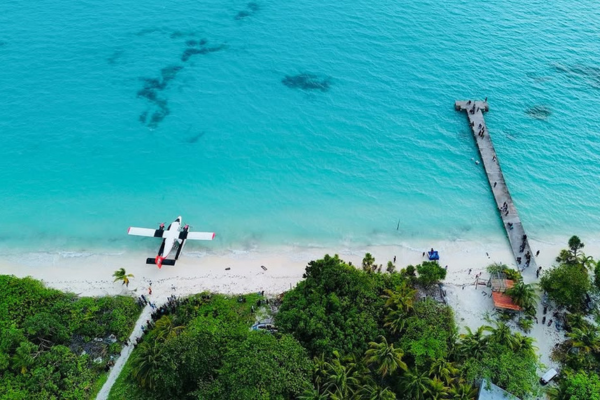
Kelaa is the northernmost inhabited island in Haa Alif Atoll, which is Maldives' upper northern region. This beautiful island stands out among the best places to visit in Maldives for its unique blend of WWII history and untouched natural beauty - a rare combination in the archipelago. This cultural gem preserves fascinating British military relics from the 1940s, including 12+ abandoned bunkers and a 1.2km airstrip now overtaken by tropical vegetation, offering history buffs unparalleled insight into the Maldives' wartime past. Beyond its historical significance, Kelaa boasts some of the country's most pristine 2km-long sandbanks, fringed by coconut palms so dense they've earned the nickname "Green Wall." Tourists can watch master artisans practice century-old crafts like coconut rope weaving (using techniques unchanged for generations) or explore vibrant coral reefs just 100m offshore. While most visit the Maldives for white sands, Kelaa offers something rarer: a chance to touch living history through its preserved bunkers and age-old crafts - a distinction that cements its place among the country's most remarkable destinations.
Fehendhoo
Quiet island with serene beauty and natural charm.
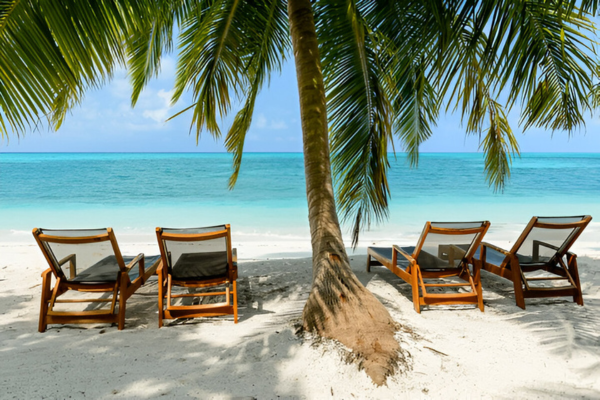
For travellers seeking an authentic Maldivian escape, Fehendhoo in Baa Atoll (western Maldives) offers an unspoiled haven that stands apart from crowded resorts. This tiny 1.2km island, home to just 200 locals, preserves the Maldives' raw beauty with dense jungle meeting pristine white beaches - no resorts, no crowds, just nature. Snorkelers regularly spot 50+ nurse sharks and endangered turtles in its vibrant house reef (85% sighting rate), while nearby Filitheyo Reef - ranked among the nation's top 5 dive sites - attracts mantas and whale sharks. By day, wander empty beaches; by night, join fishermen using century-old techniques. As one of few islands in the UNESCO-protected Baa Atoll still untouched by mass tourism, Fehendhoo delivers what modern tourists crave: genuine connection, breathtaking nature, and the Maldives as it was meant to be experienced.
Thoddoo
Lush landscapes, thriving farms, and a serene island atmosphere.
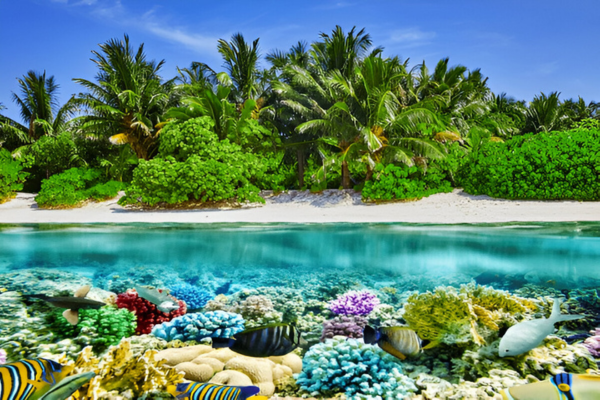
Thoddoo is a unique place in Maldives. Situated at the Alif Alif Atoll (North Ari Atoll, central Maldives), it stands out among the budget-conscious travellers seeking authentic experiences. Unlike expensive private resorts, this agricultural powerhouse—where 80% of the island's 1,500 residents work on fruit farms—offers affordable guesthouses from $50/night amidst sprawling papaya and watermelon plantations (producing 30% of the Maldives' local fruit supply). Visitors can snorkel vibrant house reefs just 100m offshore, join sunrise fishing trips on traditional dhonis, or explore 12th-century Buddhist ruins—a rare historical site in this Muslim nation. With its uncrowded white-sand beaches, organic farm tours, and cultural homestays, Thoddoo delivers the perfect mix of adventure, culture, and value, earning its spot among the top tourist palces in Maldives.
Keyodhoo
A peaceful, off-the-beaten-path island offering local experiences.

Keyodhoo, a picturesque island in Vaavu Atoll (south of Malé), is a great place for tourists seeking authentic culture and thrilling wreck diving. Just 90 minutes by speedboat from the capital, this special island is home to one of the Maldives' last traditional pole-and-line tuna fishing communities—where 70% of locals still practice this sustainable method daily. Divers flock here to explore 5+ historic shipwrecks resting in crystal-clear waters, including coral-encrusted dhonis teeming with parrotfish and moray eels. Beyond its underwater attractions, Keyodhoo's handicraft workshops produce exquisite woven palm-leaf baskets using techniques unchanged for generations. With only 500 residents and minimal tourism infrastructure, the island offers a rare glimpse of undisturbed Maldivian life—from sunrise fishing trips to quiet beach picnics—making it an amazing tourist destination in Maldives for those who value authenticity over crowds.
People Also Ask About Maldive's Attractions
Where can I go in Maldives?
You can go to vibrant islands like Malé, Maafushi, and Dhigurah, pristine beaches in Hulhumalé, and stunning dive spots like Hanifaru Bay and Fuvahmulah.
Which part of Maldives is best?
The best part of Maldives is North/South Malé Atoll for luxury resorts, Baa Atoll for UNESCO biosphere diving, or local islands like Maafushi for budget stays.
Which is the most visited place in Maldives?
The most visited place in Maldives is Malé (for transit) and resort islands like Paradise Island or Cocoa Island.
What is the prettiest place in the Maldives?
The prettiest place in the Maldives is Vaadhoo Island’s bioluminescent beaches or private resorts like Soneva Fushi.
How much does a 7-day trip to Maldives cost?
A 7-day trip to Maldives can cost 1,500 USD (budget) to 10,000+ USD (luxury), including flights, stays, and meals.
What is the price of Maldives flights?
Direct roundtrip flights (Dhaka-Malé-Dhaka) can cost from 47,000 BDT to 1,42,000 BDT. Please note that prices are subject to change based on airline policies, demand, schedules, etc.
Is 3 nights in Maldives enough?
3 nights in Maldives is enough for a short getaway, but 5-7 nights are ideal to fully experience beaches and snorkelling.
Is Maldives very costly?
Maldives is very costly at luxury resorts but affordable on local islands (50−50−150/night).
Which month is best to visit Maldives?
The best month to visit Maldives is November-April (dry season, ideal for diving and sunshine).
What is the main attraction of the Maldives?
The main attraction of the Maldives is its overwater bungalows, crystal-clear lagoons, and marine life like whale sharks.
Do I need a visa for Maldives?
You do not need a visa for Maldives if staying under 30 days (free visa-on-arrival for tourists).
What to wear in Maldives at night?
Wear light, modest clothing at night—resorts allow swimwear, but local islands prefer covered shoulders/knees.
What is Maldives most famous for?
Maldives is most famous for luxury resorts, honeymoons, and world-class snorkelling/diving.
Do and don'ts in Maldives?
Do respect local culture (no public swimsuits on local islands); don’t bring alcohol or prohibited items.
What are 5 facts about Maldives?
Five facts about Maldives: 1) Lowest country on Earth, 2) 99% ocean, 3) 1,200+ islands, 4) No rivers/forests, 5) Sunni Muslim nation.
Is Maldives good for shopping?
Maldives is not great for shopping but offers local crafts (coconut rope, lacquerware) and duty-free in Malé.
How many days do you need in the Maldives?
You need 5-7 days in Maldives to enjoy beaches, water sports, and resort hopping.
Which part of Maldives is best to stay?
The best part of Maldives to stay is North Malé Atoll for convenience, Baa Atoll for diving, or Addu Atoll for culture.
Explore Maldives with ShareTrip!
Still deciding where to go in Maldives? You can book a customisable holiday package from ShareTrip!
Call us at +8809617617617, or email us to vacation@sharetrip.net for further assistance. Before packing your swimsuit and sunscreen, book your flight and resort to Maldives now!


